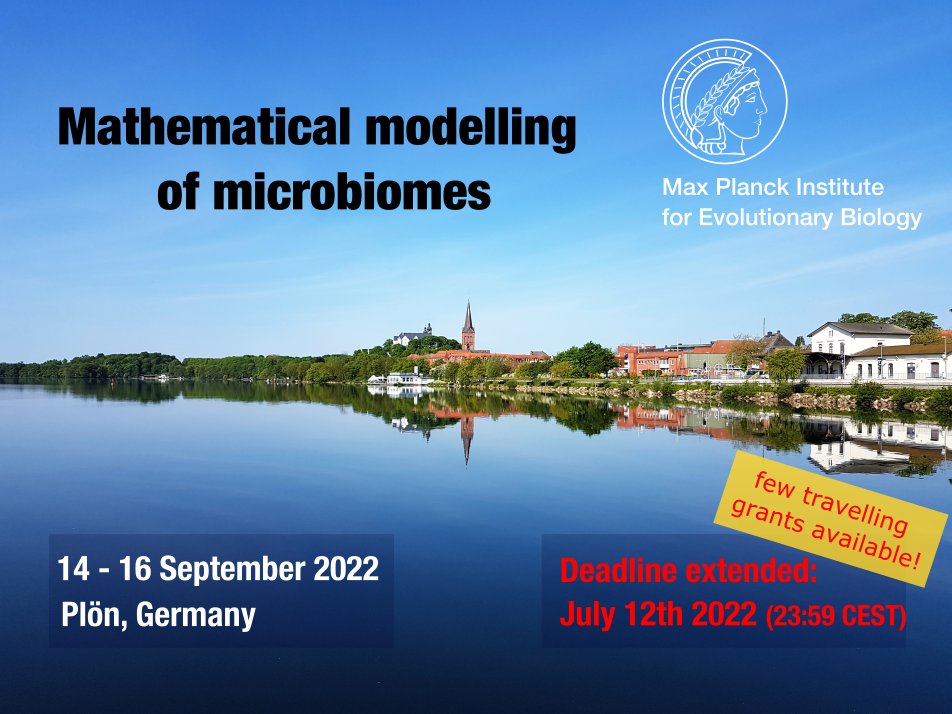Conveners
Keynote: The tempo and mode of evolution of a strain in the mammalian gut microbiota
- Isabel Gordo (Instituto Gulbenkian de Ciência )
Keynote: Talk Jacopo Grilli
- Jacopo Grilli (The Abdus Salam International Centre for Theoretical Physics )
Keynote: Generating and Dealing With Microbiome Data: The Bad, The Weird, and The Ugly
- Nicole Vega (Emory University)
Keynote: The role of multilevel selection in host microbiome evolution
- Simon Van Vliet (SNSF Ambizione fellow Biozentrum | University of Basel Infection Biology )
Keynote: Talk Christop Kaleta
- Christoph Kaleta (CAU Kiel)
Keynote: Talk Claude Loverdo
- Claude Loverdo (Sorbonne Universite / CNRS )
Keynote: Grow with the flow - How gut motility and intestinal fluid turnover shape the accumulation of bacterial biomass along the human large intestine
- Jonas Cremer (Stanford University)
Bacteria live in highly diverse ecosystems inside the intestines of many organisms. How and at what pace they evolve in that ecosystem is not yet well understood. Here we address these questions using the power of mouse models and the wealth of functional knowledge on a human gut commensal, Escherichia coli. We demonstrate that the colonization success of a new invader E. coli strain depends...
Microbial communities are highly dimensional, with many species and many variable environmental factors. Macroecology, which studies communities as statistical ensembles, is a promising way to connect these complex data to mechanistic models. In this talk, I will discuss a minimal set of macroecological patterns that characterize the statistical properties of species abundance fluctuations...
Using models to understand microbiomes requires good data, generated from experiments designed to capture relevant information and having structure suitable for model fitting, analysis capable of dealing with the idiosyncracies in these data, and models capable of recapitulating the sometimes-weird features that we actually observe. Using small host-microbiome models, we can generate data...
Most animals have a microbiome that affects their reproductive success. It is, therefore, important to understand how a host and its microbiome coevolve. An open question is to what extent host-microbiomes can evolve through selection acting at the host-level. I will present a quantitative framework based on multi-level selection theory that addresses this question. Our model shows that...
Constraint-based approaches are key concepts in modeling of metabolism. As key ingredient these approaches require the stoichiometric matrix of the metabolic network of an organism that can be readily derived from its genome. Using this stoichiometric matrix along with physiological constraints and an evolutionary objective, fluxes within such a network can be predicted using flux balance...
Our work on gut microbiota centers on two main themes. The first topic is about quantitative inference from experimental data of the dynamics of the bacterial gut population. One tool to study the populations which dynamics cannot be directly observed is to use tagged neutral subpopulations. The distribution of the different tags in the population are measured at several points, and from the...
The human gut harbors a highly dynamical microbiota shaped by the rapid turnover of bacterial biomass: While food intake by the host regularly supports fast growth of new bacteria, a substantial fraction of the bacterial population is also lost with every major bowel movement. The dynamics of the turnover depend strongly on the consumed diet and the speed with which bacteria grow. But the...

